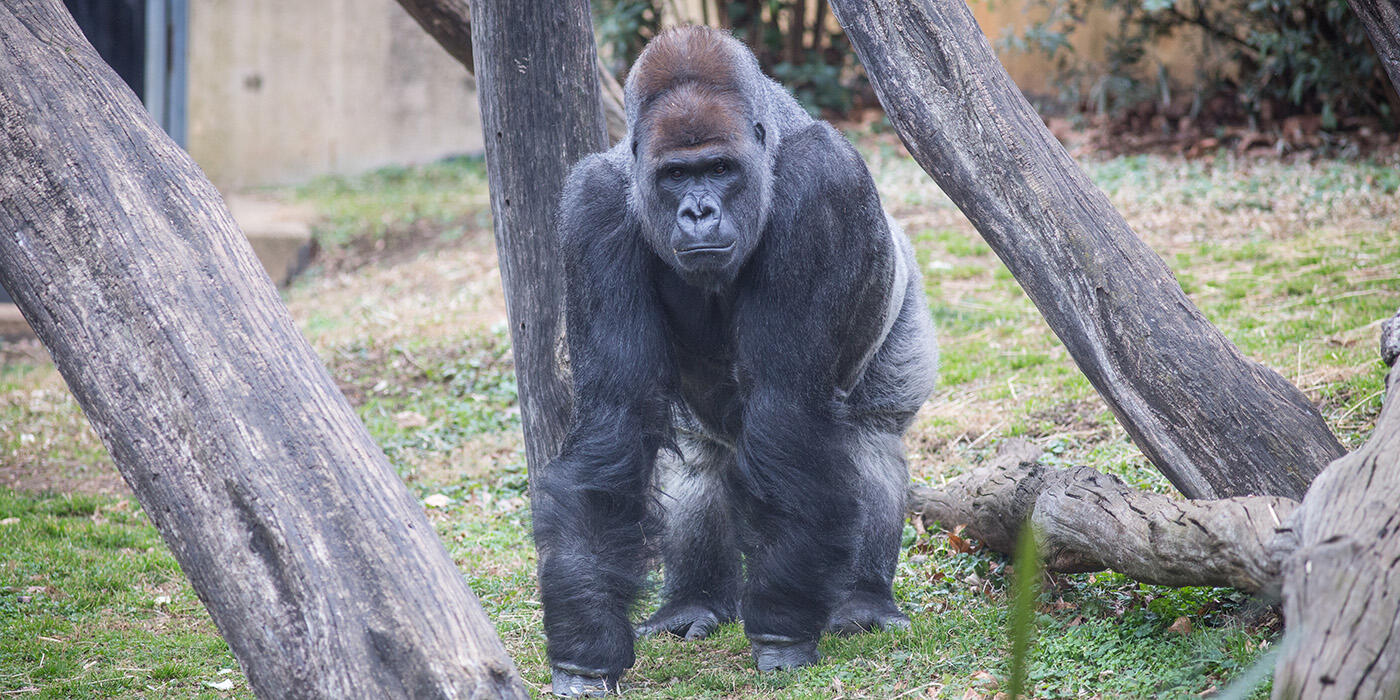A Day in the Life of a Gorilla at Smithsonian’s National Zoo
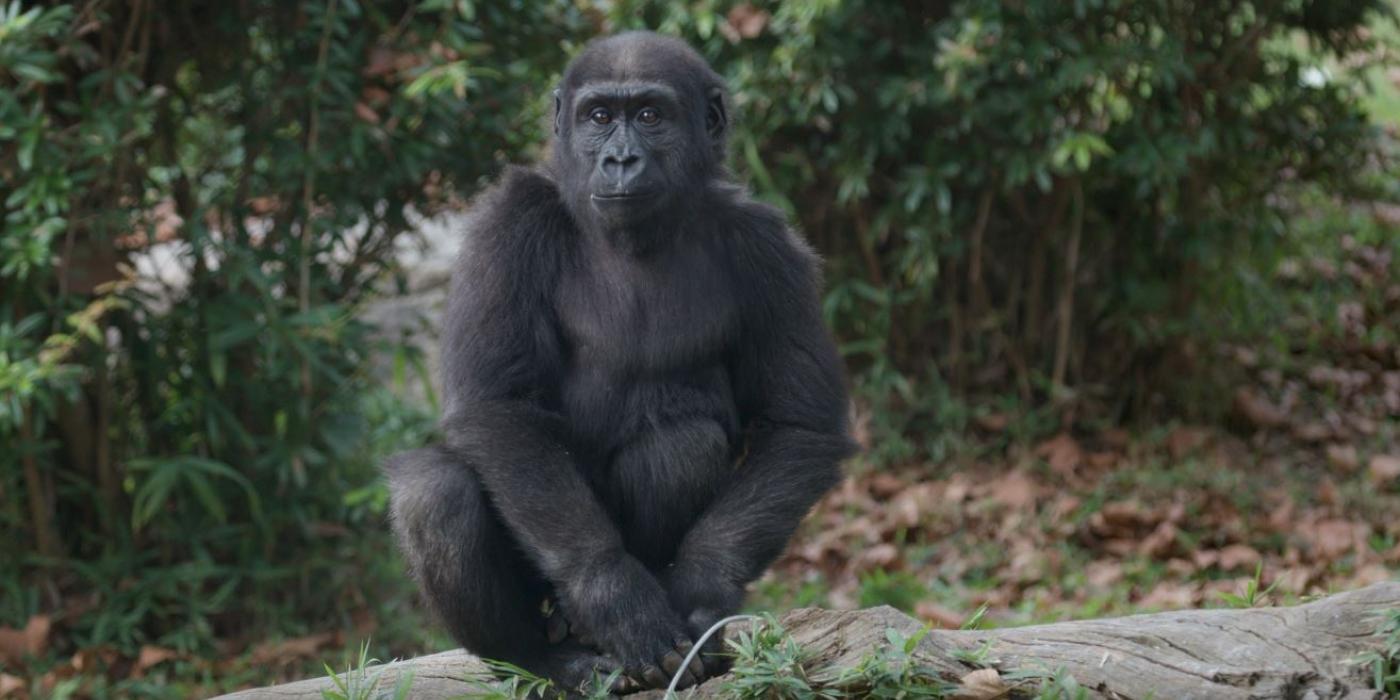
Playing, foraging, training and snoozing—it’s all in a day in the life of the Smithsonian’s National Zoo’s western lowland gorilla troop! In celebration of World Gorilla Day, we’re bringing the Zoo to you with a peek behind the scenes of the Great Ape House. Learn how the primate team cares for its animal ambassadors—Baraka, Calaya, Moke, Mandara and Kibibi—in Valerie Schultz’s keeper diary.
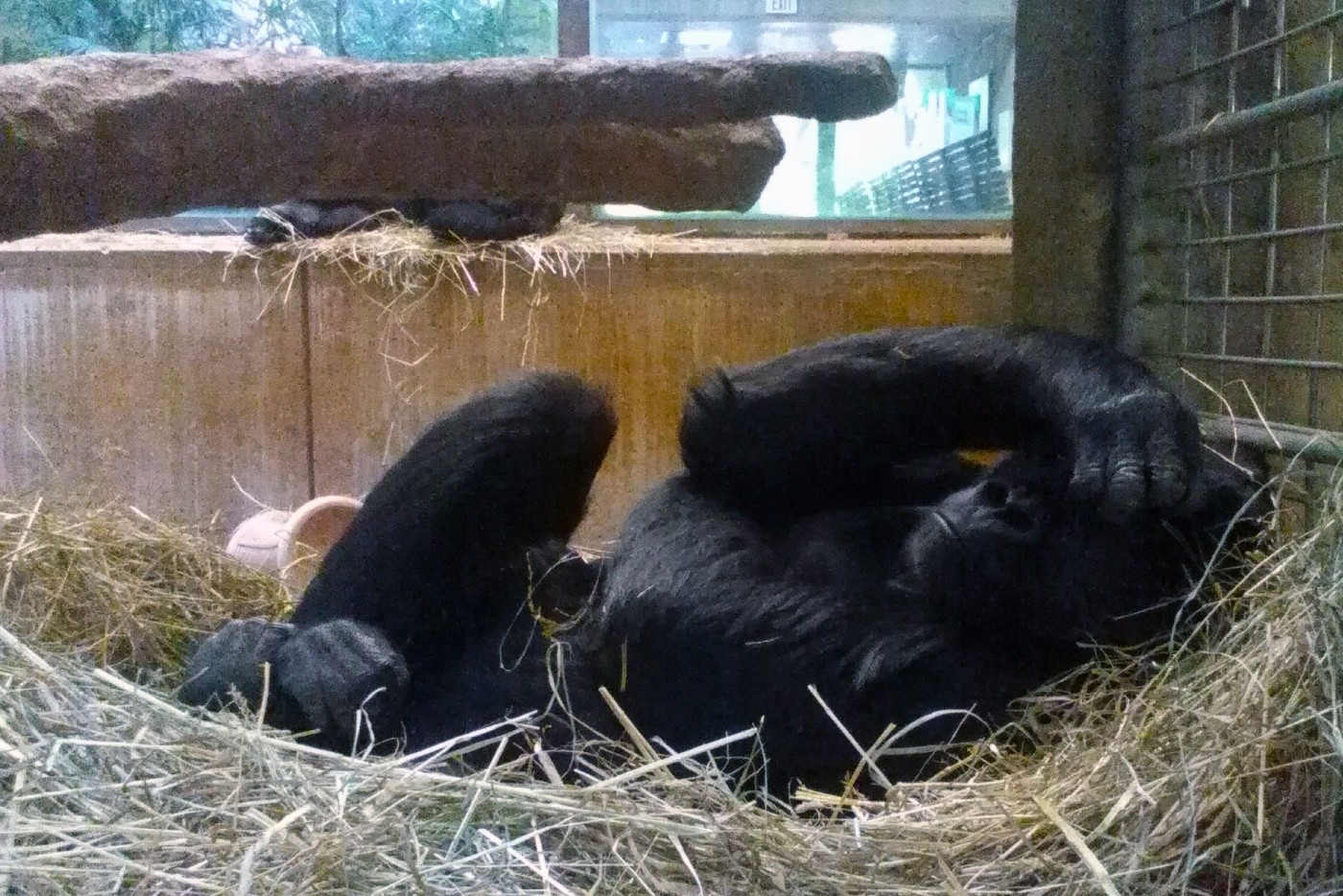
6:15 a.m. | Keepers Report for Duty
Good morning! Just as the sun is rising over Washington, D.C., the primate team reports for duty. Upon hearing the doors open and their keepers shuffling about, some of the gorillas rouse from their night nests to catch a glimpse of the commotion. Depending on the day, the gorillas might greet us, or they might grumble. Just like humans, our fellow great apes can be grumpy in the morning. Sometimes, we all want to snooze in a bit longer!
7 a.m. | Check Ups and Check Outs
To start the day, each gorilla receives a small cup of yogurt. This is how we deliver most medications to individuals that need them. While the gorillas enjoy this pre-breakfast snack, we perform an overall wellness check. We take note of whether the gorillas are bright, alert, and behaving and maneuvering around their habitat as normal. We also look for any signs of injuries—cuts, scrapes or favoring appendages—that may require veterinary attention.
While the gorillas continue to wake up inside, we prepare the outdoor habitat, weather permitting. Before the gorillas can go outside, we ensure the habitat is secure and look for any foreign objects, such as fallen tree limbs, that may need to be removed. We also check for critters that may have spent the night, such as snakes. If there is one creature that our gorillas aren’t fond of, it is those legless reptiles. Even our 400-pound silverback Baraka will run away if he spots one!
7:30 a.m. | The Search for Snacks
Once the coast is clear, we set up various enrichment items, such as puzzle feeders, and toss food all around the habitat. We want to encourage our gorillas to forage for their daily diet, just as they would in the wild. Forage feedings give the troop an opportunity to eat together without much competition, which helps maintain strong social bonds.
When the door opens and the gorillas step outside, some get straight to the snacks, while others choose to play with the enrichment items or each other. Our 3-year-old youngster, Moke, seems to enjoy rummaging through all of the toys he can find! Mornings are a great time to visit our gorilla troop, as it is usually when Moke and his favorite friend—12-year-old female, Kibibi—are at their most playful and rambunctious.
10:30 a.m. | Exciting Enrichment
While the gorillas spend time outside, we clean their indoor enclosures and place even more enrichment around their habitat. After a few hours of playing, eating and relaxing, the gorillas are usually ready for a change of scenery. Inside, they are greeted with puzzle feeders filled with food. These items are great for both physical and mental exercise—they have to think about how to extract the tasty treats within the toys. Our oldest gorilla—39-year-old female and mother to Kibibi, Mandara—seems to enjoy coming inside as early as possible to try and get first dibs on the exciting enrichment that awaits!
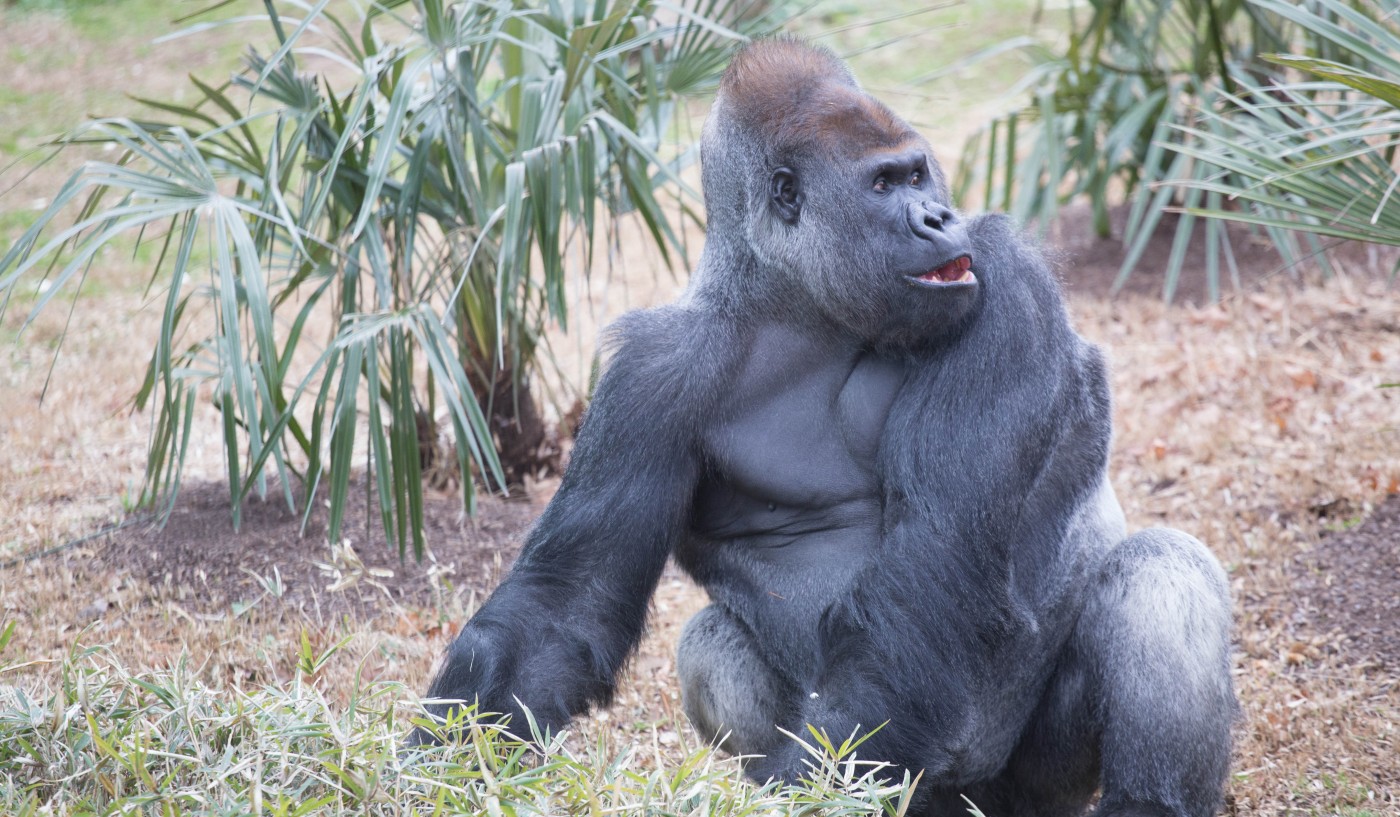
11:30 a.m. | Lunchtime for Hungry Herbivores
It’s lunchtime, and the troop travels back outside for yet another forage. All this talk of food may have you wondering—what exactly do gorillas eat?
Adult male gorillas can eat upwards of 45 pounds of food a day; adult females eat about two-thirds that amount. Here at the Smithsonian’s National Zoo, our gorillas eat a varied diet made up of browse (fresh tree trimmings), leafy greens, vegetables and fruits that are prepared by our wonderful Nutrition Science team. Their wild cousins eat wild celery, stems, bamboo shoots, fruits and tree pulp.
After the gorillas have scrounged up the last scraps of food in the yard, Calaya—our 19-year-old female and mother to Moke—usually rounds up the troop and encourages everyone to go inside for the evening. After nibbling on greens, browse and alfalfa hay, they lay down around 1 p.m. for an afternoon nap.
2:15 p.m. | Training Time
In the early afternoon, we conduct husbandry training sessions with each of our western lowland gorillas. Using verbal cues and hand signals, we ask our apes to present their body parts. For example, they may place an ear against the mesh so we can take their temperature with a thermometer. Or, they may present their arm so we can practice injection or blood draw training with a blunted needle. By learning these behaviors, the gorillas can voluntarily participate in their healthcare, thereby lessening the need to put them under anesthesia for routine procedures. (For safety reasons, we never share a space with our gorillas.)
Participation in these training sessions is always voluntary, but the gorillas seem to enjoy interacting with us. Every time they do a correct behavior, they receive positive reinforcement in the form of a favorite food—usually fruit or mixed nuts. Whenever the gorillas see us coming by with our training buckets, we often hear a lot of excited grumbles! It is very rewarding to work with these magnificent animals and to have the opportunity to bond with them and gain their trust through these interactions.
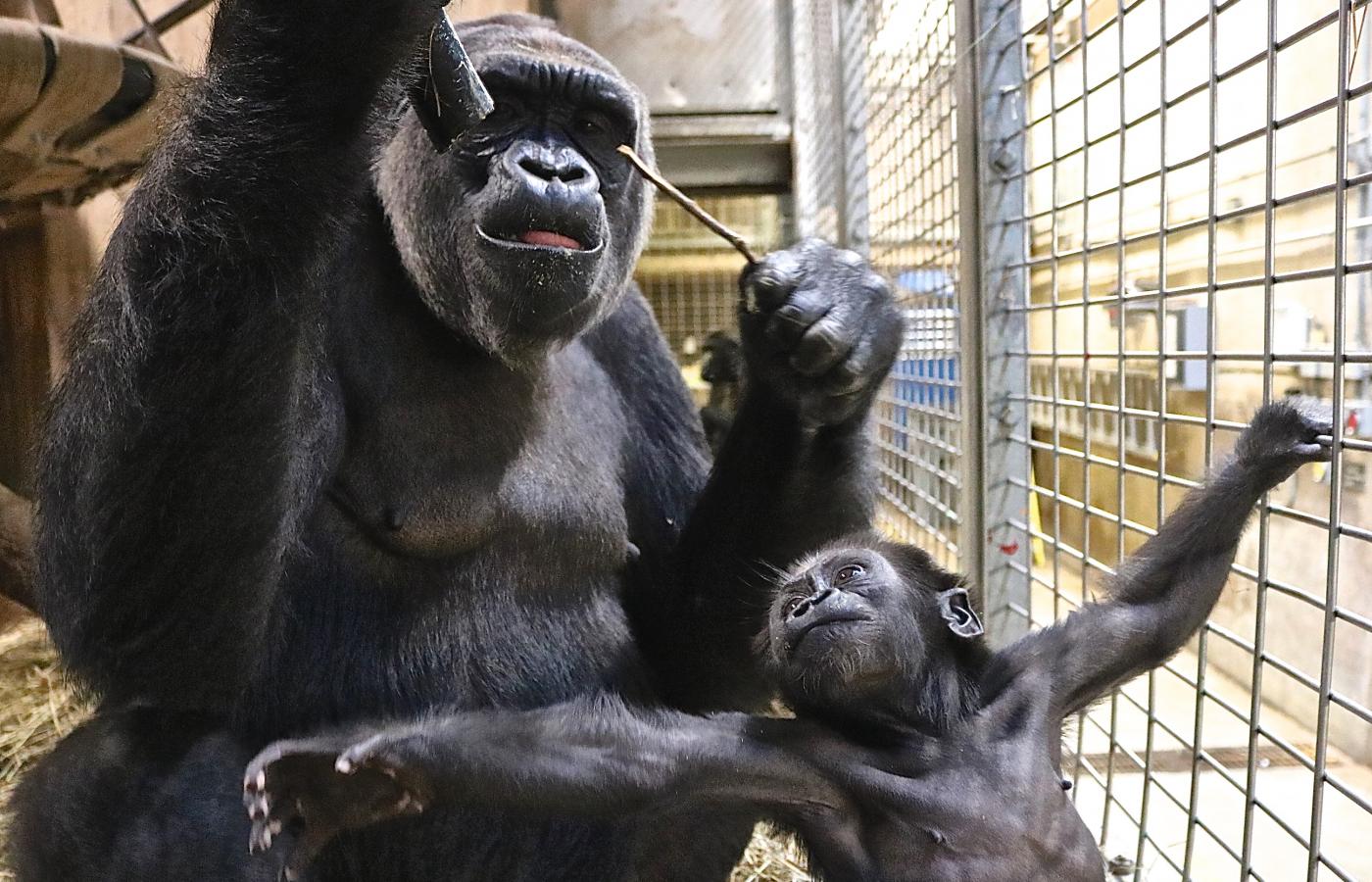
Calaya uses a piece of bamboo to extract peanut butter from a PVC tube while her son Moke (then 20 weeks old) watches.
When the training session comes to a close, each gorilla receives his or her own special enrichment. For example, a gorilla could receive a PVC tube with peanut butter inside. The gorilla would need to use a “tool”—say, a piece of browse—in order to fully enjoy the tasty treat. At other times, the treat may be a piece of folded butcher block paper with a dollop of peanut butter inside, which can be easily opened and enjoyed.
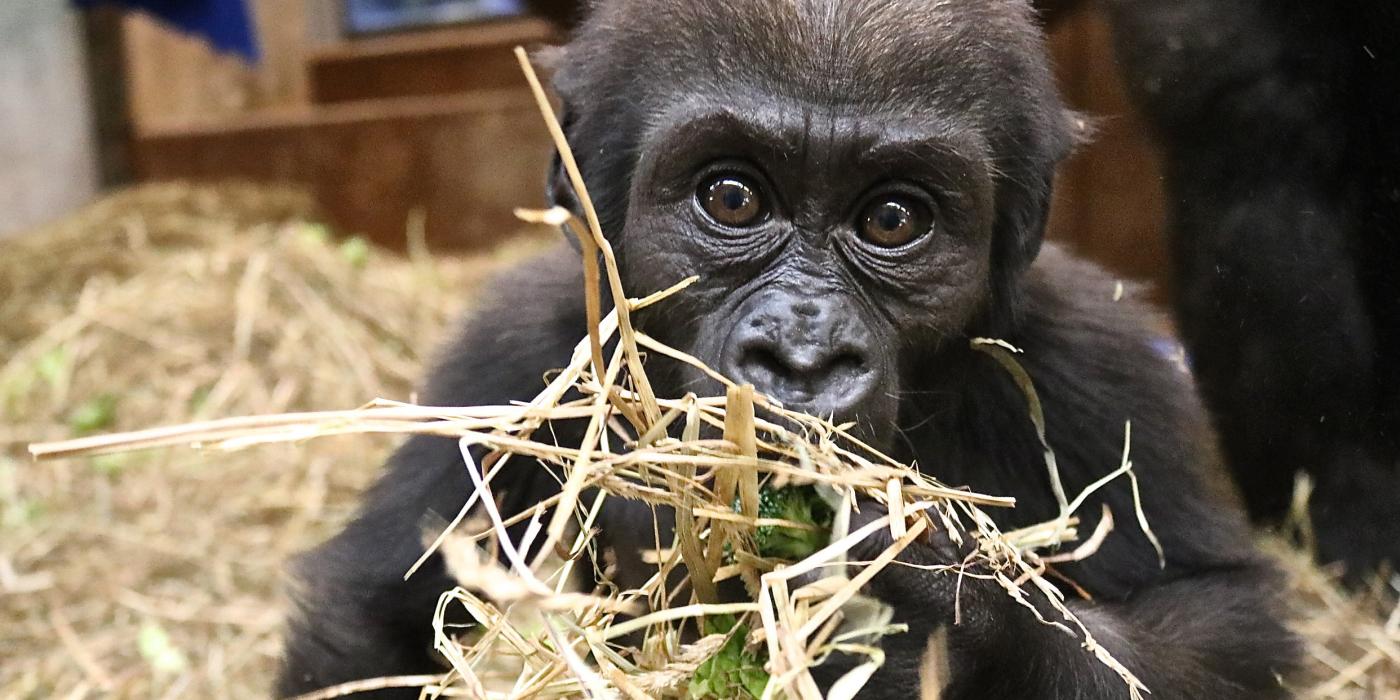
3 p.m. | Goodnight, Gorillas
As we prepare to head home for the day, we check on the gorillas one last time. Usually, they are enjoying the leftovers from an earlier forage or starting to settle down and build their nest for the night. While we lock up and turn off lights, mischievous Moke is in the adjacent habitat, chasing us and throwing hay as a last goodbye.
Can’t get enough of Moke? Follow the latest news on our juvenile western lowland gorilla using the hashtag #GorillaStory, and read previous updates on the Smithsonian's National Zoo's troop here.
Related Species:

